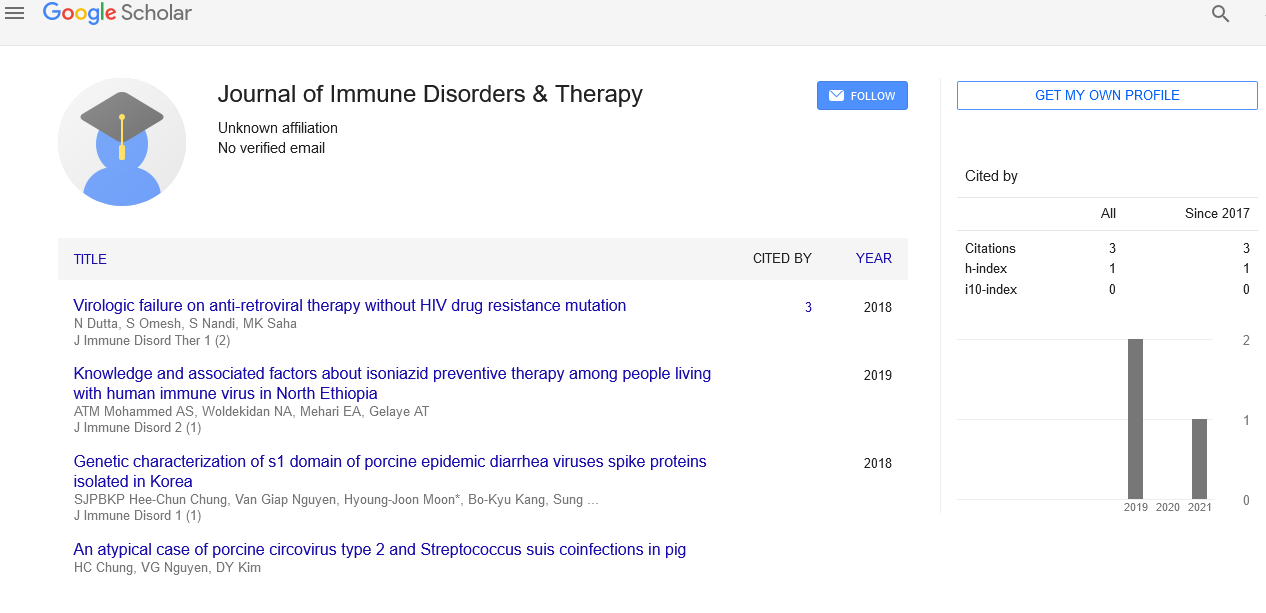Allergic reactions
Received: 10-Jun-2021 Accepted Date: Jun 24, 2021; Published: 01-Jul-2021, DOI: 10.37532/puljidt.2021.4(3).e002
This open-access article is distributed under the terms of the Creative Commons Attribution Non-Commercial License (CC BY-NC) (http://creativecommons.org/licenses/by-nc/4.0/), which permits reuse, distribution and reproduction of the article, provided that the original work is properly cited and the reuse is restricted to noncommercial purposes. For commercial reuse, contact reprints@pulsus.com
Abstract
Allergic reactions are sensitivities to substances called allergens that come into contact with the skin, nose, eyes, respiratory tract, and gastrointestinal
tract. They can be breathed into the lungs, swallowed, or injected.
What is an allergic reaction?
An “allergic reaction” is the way your body responds to the allergen. A chain of events occur that result in an allergic reaction.
If you are prone to allergies, the first time you’re exposed to a specific allergen (such as pollen), your body responds by producing allergic (IgE) antibodies. The job of these antibodies is to find the allergens and help remove them from your system. As a result, chemical called histamine is released and causes symptoms of allergies.
What are the types of allergies and how are they treated?
You can be allergic to a wide variety of substances – including pollen, animal dander, mold and dust mites.
Pollen
Seasonal allergic rhinitis, or hay fever, is an allergic response to pollen. It causes inflammation and swelling of the lining of your nose and of the protective tissue of your eyes (conjunctiva).
Symptoms include sneezing, congestion (feeling stuffy), and itchy, watery eyes, nose and mouth. Treatment options include over-the-counter and prescription oral antihistamines, anti-leukotrienes, nasal steroids, nasal antihistamines, and nasal cromolyn. In some people, allergic asthma symptoms (wheezing, shortness of breath, coughing, and/ or chest tightness) can be caused by exposure to pollen.
Your symptoms can be reduced by avoiding pollen. Stay indoors when pollen counts are high, close your windows, and use air conditioning. Ask your healthcare provider about immunotherapy (“allergy shots”) to treat pollen allergy.
Dust mites
Dust mites are tiny organisms that live in dust and in the fibers of household objects, such as pillows, mattresses, carpet, and upholstery. Dust mites grow in warm, humid areas.
The symptoms of dust mite allergy are similar to those of pollen allergy. To help manage dust mite allergies, try using dust mite encasements (airtight plastic/polyurethane covers) over pillows, mattresses, and box springs. Also, remove carpet, or vacuum frequently with a high-efficiency filter vacuum cleaner. Treatment may include medications to control your nasal/eye and chest symptoms. Immunotherapy may be recommended if your symptoms are not adequately controlled with avoidance methods and medications.
Molds are tiny fungi (like Penicillium) with spores that float in the air like pollen. Mold is a common trigger for allergies. Mold can be found indoors in damp areas, such as the basement, kitchen, or bathroom, as well as outdoors in grass, leaf piles, hay, mulch or under mushrooms. Mold spores reach a peak during hot, humid weather.
Treatment may include medications to control your nasal/eye and chest symptoms. Immunotherapy may be recommended if your symptoms are not adequately controlled with avoidance and medications.
Animal dander.
Allergic reactions can be caused by the proteins secreted by sweat glands in an animal’s skin, which are shed in dander, and by the proteins in an animal’s saliva. Avoidance measures don’t work as well as simply removing the pet from your home. However, because many people are reluctant to do this, second-best measures include keeping your pet out of your bedroom, using air cleaners with HEPA filtration and washing your pet (cat or dog) frequently.
Treatment may include medications to control your nasal/eye and chest symptoms. Immunotherapy may be recommended if your symptoms are not adequately controlled with avoidance methods and medications.
Insect venom (stings).
If you get a bee sting, a normal reaction includes pain, swelling and redness around the sting site. A large, local reaction includes swelling that extends beyond the sting site. For example, if you are stung on the ankle, you may see swelling in your leg.
The most serious reaction to an insect sting is an allergic one, which needs immediate medical attention. Symptoms of an allergic reaction to an insect sting include:
• Difficulty breathing.
• Generalized (widespread) hives that appear as a red, itchy rash that spreads to areas other than the area that was stung.
• Swelling of your face, throat or mouth tissue.
• Wheezing or difficulty swallowing.
• Restlessness and anxiety.
• Rapid pulse.
How common are allergies?
More than 50 million Americans (1 in 6) experience all types of allergies, including indoor/outdoor allergies, food and drug, latex, insect, skin and eye allergies. The number of people who have allergies continues to increase across all ages, sex and racial groups.





